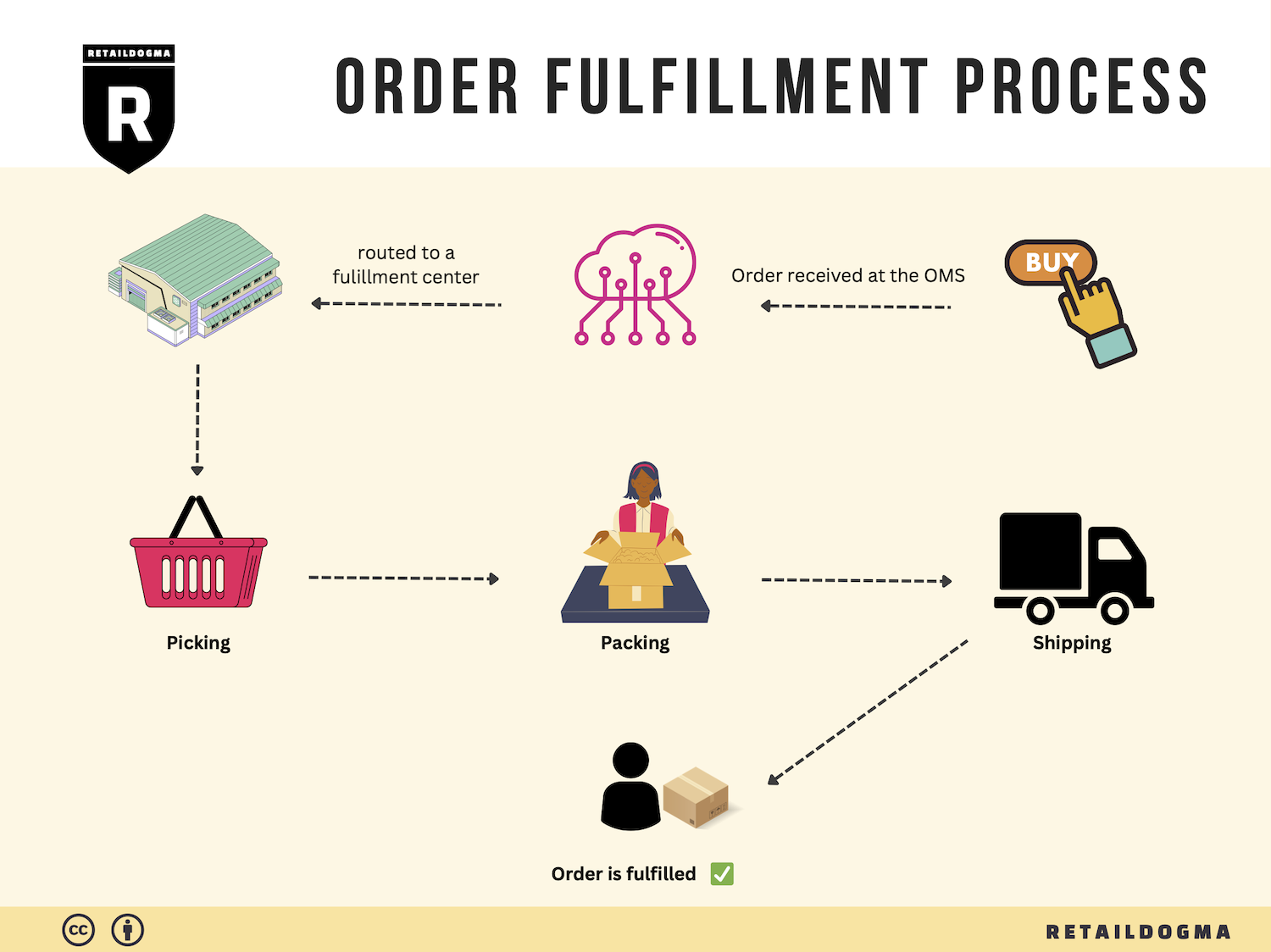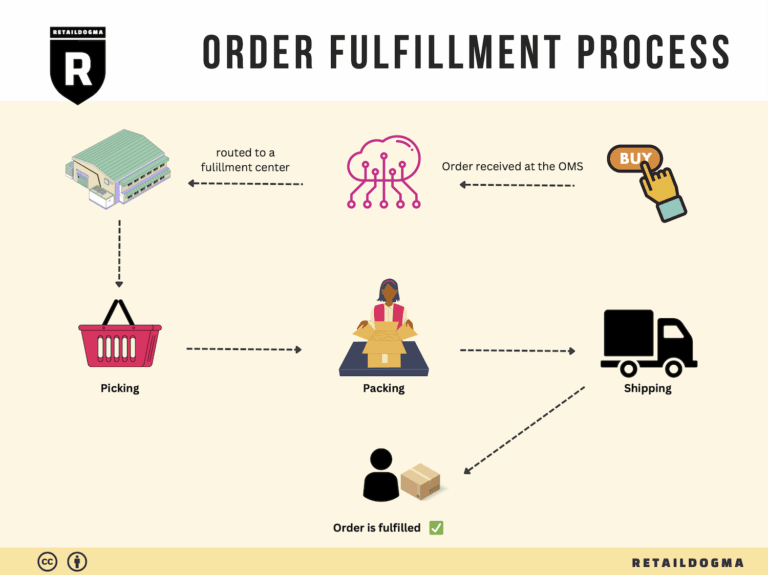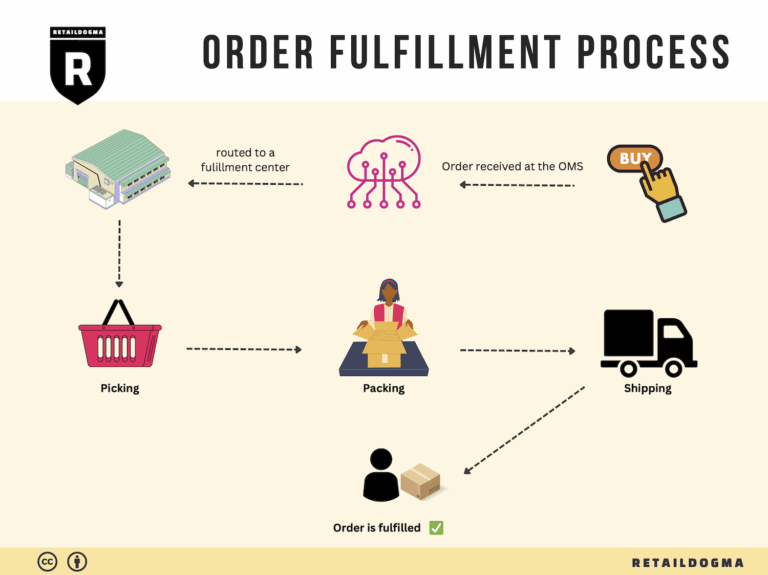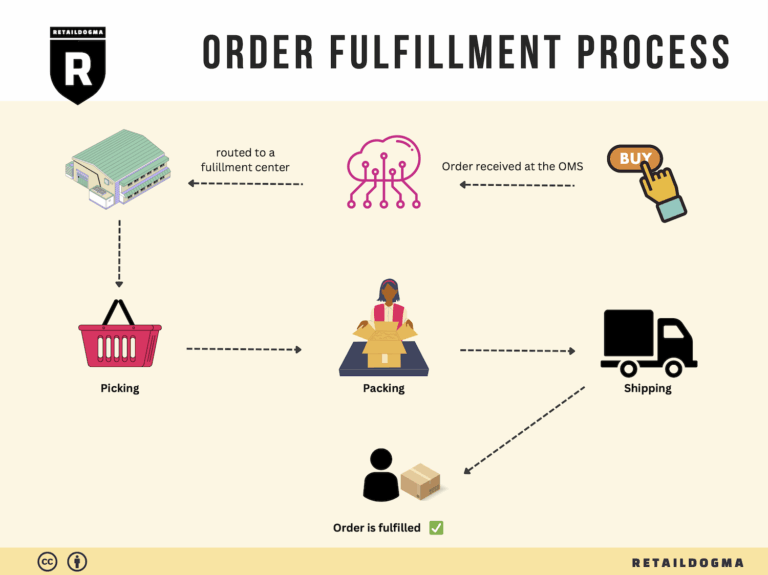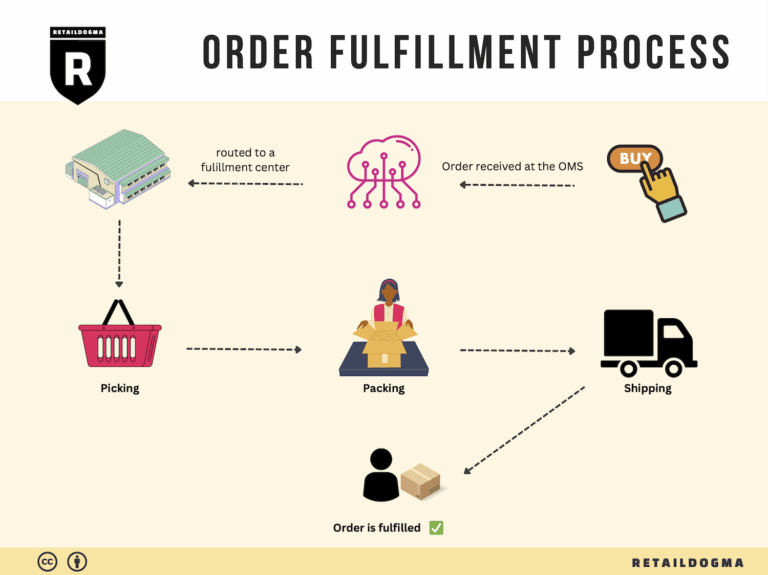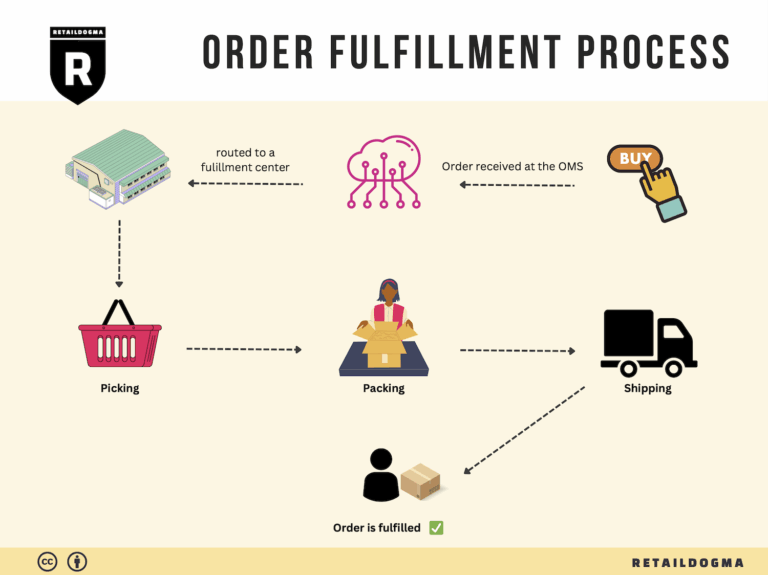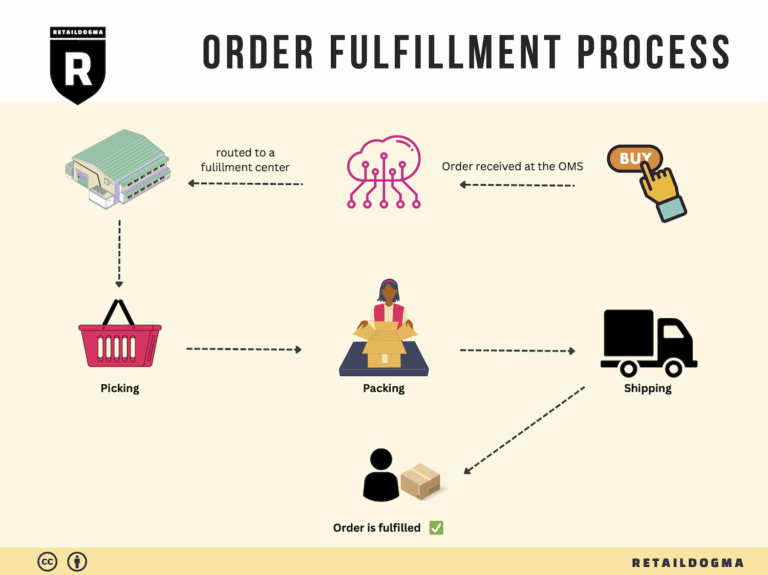How Order Fulfillment Works: A Step-by-Step Guide for Businesses
What is E-commerce Fulfillment? An Introduction for Growing Businesses
Understanding the Challenges of Order Fulfillment
As your online business begins to grow, the excitement of increased sales can quickly turn into a daunting reality—packing and shipping orders can become an overwhelming task. Many e-commerce entrepreneurs find themselves bogged down by logistics, struggling to keep up with order processing, inventory management, and customer service. This is where effective e-commerce fulfillment comes into play, providing a streamlined process to get products from your shelves to your customers’ doors.
Defining E-commerce Fulfillment
At its core, e-commerce fulfillment is the process of getting a product into the hands of a customer. This involves a series of critical steps, including receiving inventory, storing products, processing orders, picking and packing items, shipping them out, and managing returns. For growing businesses, understanding and optimizing this process is crucial not just for efficiency, but for customer satisfaction and retention.
What This Guide Will Cover
In this comprehensive guide, we will explore the various fulfillment models available to e-commerce businesses, including Third-Party Logistics (3PL) and Fulfillment by Amazon (FBA). Each model has its unique advantages and challenges, and we will break down these differences to help you determine which might be the best fit for your business.
We will delve into the core services that fulfillment partners provide, such as inventory management, order processing, shipping logistics, and customer service. Understanding these services will empower you to assess potential partners more effectively.
Additionally, we will discuss the key considerations for selecting a fulfillment partner, including factors like scalability, technology integration, and cost-effectiveness. Pricing structures can vary significantly between providers, so we will also highlight what to expect in terms of costs and fees associated with different fulfillment services.
The Goal of This Guide
Our goal is to equip you with the knowledge and tools necessary to make informed decisions about your logistics and fulfillment strategy. By understanding the intricacies of e-commerce fulfillment, you can choose a path that not only supports your current operational needs but also scales with your growing business. With the right fulfillment partner, you can enhance your efficiency, improve customer satisfaction, and ultimately drive your business toward greater success.
What You’ll Learn In This Guide
- What is E-commerce Fulfillment? An Introduction for Growing Businesses
- The Order Fulfillment Process: From ‘Buy’ Button to Customer’s Door
- Comparing Fulfillment Models: In-House vs. 3PL vs. Dropshipping
- A Deep Dive into Amazon FBA: Pros, Cons, and Who It’s For
- Core Services Offered by Fulfillment Centers
- How to Choose a Fulfillment Partner: A 6-Point Checklist
- Understanding Fulfillment Pricing: A Breakdown of Common Fees
- Frequently Asked Questions (FAQs) about Fulfillment
- Conclusion: Is Outsourcing Fulfillment the Right Move for Your Business?
- Important Disclaimer
The Order Fulfillment Process: From ‘Buy’ Button to Customer’s Door
1. Receiving Inventory
The first step in the order fulfillment process involves receiving inventory from suppliers or manufacturers. This stage is crucial because it sets the foundation for the entire fulfillment operation. When goods arrive at the fulfillment center, they must be inspected for quality and quantity, ensuring that what was ordered matches what has been received.
A key term associated with this step is SKU (Stock Keeping Unit). Each product is assigned a unique SKU to facilitate tracking and inventory management. This identification system helps in organizing products efficiently, preventing stock discrepancies, and simplifying future inventory audits.
Efficient receiving processes minimize errors and delays, which is vital for maintaining a smooth operation. If discrepancies are found during this stage, they must be resolved immediately to avoid disruptions in the supply chain. Effective inventory receiving directly impacts customer satisfaction by ensuring that products are available for order fulfillment.
2. Warehouse Storage
Once the inventory has been received and verified, the next step is warehouse storage. In this phase, products are organized within the fulfillment center, often using a systematic layout that optimizes space and accessibility. Proper storage techniques can significantly influence the efficiency of subsequent processes.
FIFO (First In, First Out) is a key term in this context. This inventory management principle ensures that the oldest stock is sold first, which helps prevent spoilage and obsolescence, especially for perishable goods.
The importance of effective warehouse storage cannot be overstated; it reduces the time it takes to retrieve products during order picking, thus speeding up the overall fulfillment process. A well-organized warehouse also improves accuracy, as products are easier to locate and less likely to be misplaced.
3. Order Picking
With products stored efficiently, the next step is order picking, where items are selected from the warehouse based on customer orders. This stage is pivotal because it directly influences the speed and accuracy of order fulfillment.
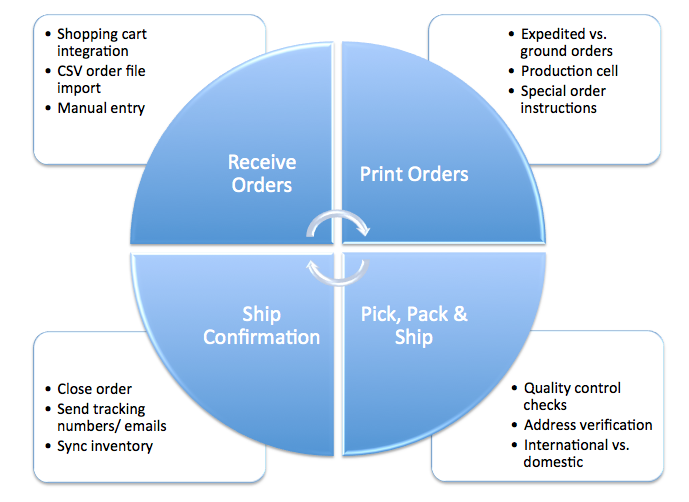
Pick lists are essential tools in this step. A pick list is a document or digital tool that outlines the items and quantities needed for each order, guiding warehouse staff on where to find the products.
Effective order picking methods, such as batch picking (where multiple orders are picked simultaneously), can enhance efficiency, especially during peak shopping seasons. The accuracy of this step is critical; any mistakes in picking can lead to customer dissatisfaction, increased returns, and additional shipping costs. Thus, investing in training and technology, such as barcode scanners, can significantly improve picking accuracy and speed.
4. Order Packing
After items have been picked, they move to the order packing stage. This process involves securely packaging products for shipment to customers. Proper packing is vital for protecting items during transit and ensuring that they arrive in excellent condition.
Packaging materials are a key consideration here. Businesses must choose the right materials to prevent damage while also considering cost-effectiveness and sustainability.
Effective packing not only protects products but also enhances the customer experience. Including branded packing materials or personalized messages can create a memorable unboxing experience, fostering customer loyalty. Additionally, optimizing packing sizes to reduce shipping costs is an important strategy for maintaining profitability.
5. Shipping & Delivery
The final step in the order fulfillment process is shipping and delivery. Once orders are packed, they are labeled and dispatched to the appropriate shipping carriers for delivery to customers. This step is crucial for ensuring that products reach customers in a timely manner, which directly impacts satisfaction and repeat business.
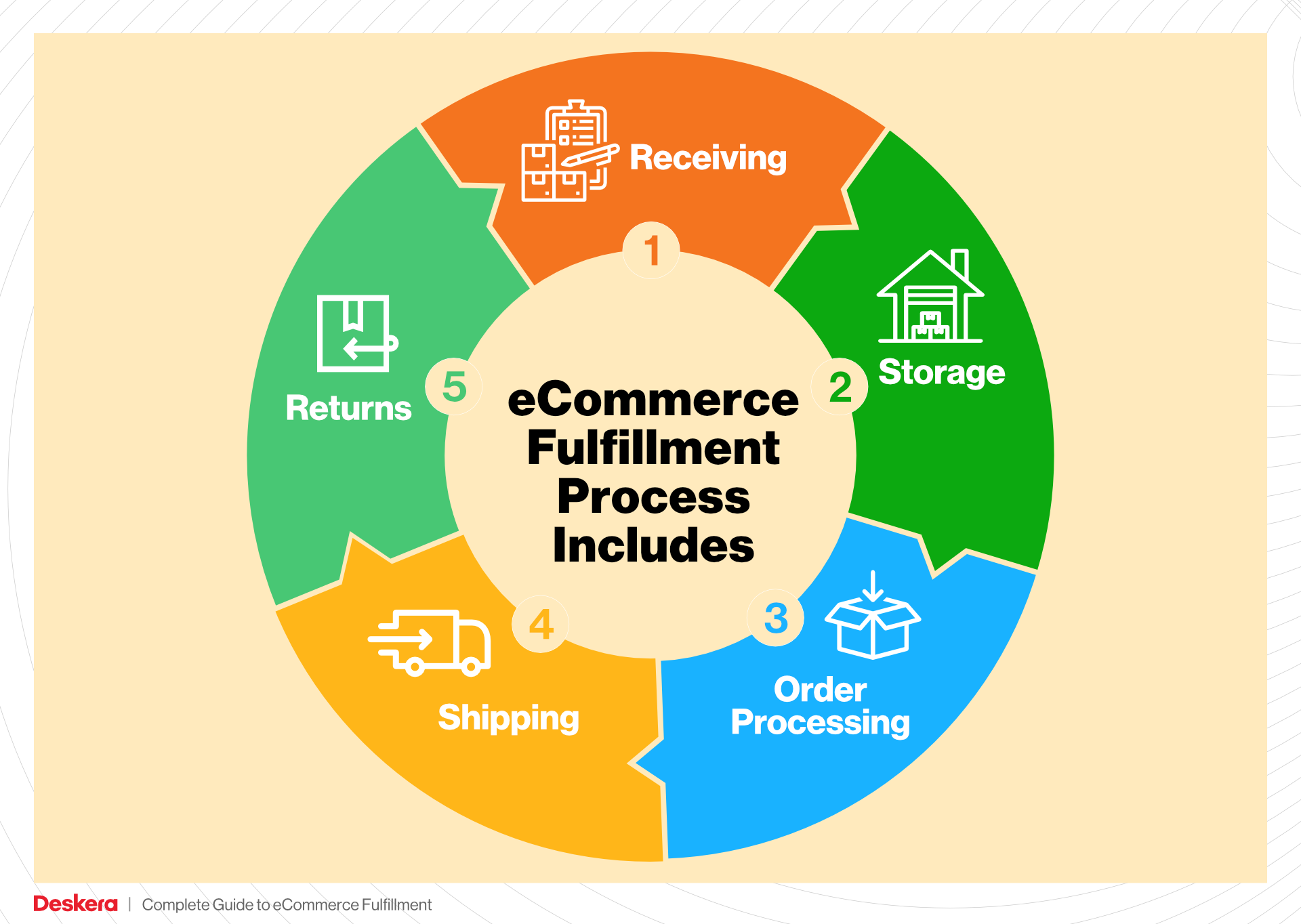
Last-mile delivery is a key term associated with this stage. It refers to the final leg of the delivery process, where the package is transported from the distribution center to the customer’s doorstep. Efficient last-mile delivery can be challenging but is essential for meeting customer expectations, especially in an era where fast shipping is the norm.
The significance of this step cannot be overlooked; delays or issues in shipping can result in negative reviews and lost customers. Implementing tracking systems allows customers to monitor their orders, improving transparency and trust. Additionally, partnering with reliable carriers can enhance delivery efficiency and reliability.
In conclusion, the order fulfillment process involves a series of critical steps that require careful management to ensure customer satisfaction and operational efficiency. By mastering these steps—from receiving inventory to shipping and delivery—e-commerce businesses can scale their operations effectively while meeting the growing demands of their customers.
Comparing Fulfillment Models: In-House vs. 3PL vs. Dropshipping
Fulfillment Model Comparison
| Model | Who Handles Inventory | Best For (Business Stage) | Key Advantage | Key Disadvantage |
|---|---|---|---|---|
| In-House Fulfillment | Business (Own Warehouse/Staff) | Established Businesses | Full control over inventory and customer experience | High overhead costs and resource-intensive |
| Third-Party Logistics (3PL) | 3PL Provider | Growing/Scaling Businesses | Cost-effective, scalable, and flexible operations | Less control over branding and customer interactions |
| Dropshipping | Supplier or Manufacturer | Startups/Small Businesses | Low startup costs and no inventory management | Lower profit margins and potential supply chain issues |
In-House Fulfillment
In-house fulfillment refers to the practice of managing all aspects of inventory storage, order processing, and shipping within the business’s own facilities. This model is often favored by established businesses that have the resources and infrastructure to handle fulfillment directly. The primary advantage of in-house fulfillment is the level of control it offers. Companies can manage their inventory precisely, customize packaging, and foster direct relationships with customers. This can lead to enhanced brand loyalty and a tailored customer experience. However, the disadvantages are significant. In-house fulfillment requires a substantial investment in warehousing space, labor, technology, and logistics, making it resource-intensive. Additionally, as demand fluctuates, businesses may find it challenging to scale operations efficiently, leading to potential overcapacity or stockouts.
Third-Party Logistics (3PL)
Third-party logistics (3PL) involve outsourcing fulfillment operations to a specialized logistics provider. This model is particularly beneficial for growing or scaling businesses that may not yet have the infrastructure for in-house fulfillment. One of the key advantages of using a 3PL is cost-effectiveness; businesses can reduce overhead costs associated with warehousing, staffing, and shipping by leveraging the 3PL’s existing resources. Moreover, 3PLs often have advanced technology and expertise that can help optimize fulfillment processes, allowing businesses to scale rapidly without significant capital investment. However, partnering with a 3PL does come with its challenges. Businesses may have less control over branding and customer service, which can dilute the customer experience. Additionally, relying on a third party for logistics can introduce potential risks in terms of communication, inventory accuracy, and service consistency.
Dropshipping
Dropshipping is a fulfillment model where businesses sell products that are shipped directly from a supplier or manufacturer to the end customer, without holding any inventory themselves. This model is especially attractive for startups and small businesses, as it requires minimal upfront investment and eliminates the need for inventory management. The primary advantage of dropshipping is the ability to offer a wide range of products without the financial burden of purchasing and storing inventory. This flexibility allows entrepreneurs to test various products and markets quickly. However, dropshipping also has notable disadvantages. Profit margins can be lower compared to other fulfillment methods, as suppliers typically charge higher prices for the convenience of dropshipping. Additionally, businesses may face challenges with supply chain reliability, leading to potential delays and customer dissatisfaction. The lack of control over inventory and shipping can also hinder the ability to provide consistent service quality.
Conclusion
Choosing the right fulfillment model is critical for e-commerce businesses looking to scale effectively. In-house fulfillment offers control but at a high cost, making it suitable for established companies with sufficient resources. Third-party logistics provide a flexible and cost-effective solution for growing businesses, although it may come with some trade-offs in customer experience. Dropshipping presents a low-risk entry point for startups but can lead to challenges with profit margins and supplier reliability. Each model has its unique strengths and weaknesses, and businesses must assess their specific needs, resources, and growth objectives to determine the best fulfillment strategy for their operations.
A Deep Dive into Amazon FBA: Pros, Cons, and Who It’s For
Understanding Fulfillment by Amazon (FBA)
Fulfillment by Amazon (FBA) is a service that allows e-commerce sellers to store their products in Amazon’s extensive fulfillment centers. Once a customer places an order for a seller’s product, Amazon takes over the entire fulfillment process, which includes picking, packing, shipping, and handling customer service inquiries. This service is designed to help sellers scale their businesses by leveraging Amazon’s vast logistics network and customer base.
How FBA Works
-
Product Storage: Sellers send their inventory to Amazon’s fulfillment centers. Once received, Amazon stores the products until they are sold.
-
Order Processing: When a customer places an order, Amazon’s system automatically identifies the nearest fulfillment center that has the product in stock.
-
Picking and Packing: Amazon staff picks the item from the shelf, packs it according to their standards, and prepares it for shipping.
-
Shipping: Amazon handles all shipping logistics. Products are often eligible for Amazon Prime, allowing for expedited shipping options.
-
Customer Service and Returns: Amazon manages customer service inquiries and handles returns, providing a seamless experience for both the seller and the buyer.
Pros of Fulfillment by Amazon (FBA)
-
Prime Eligibility: One of the most significant advantages of using FBA is that products become eligible for Amazon Prime. This can dramatically increase sales, as Prime members are more likely to purchase items that offer free two-day shipping.
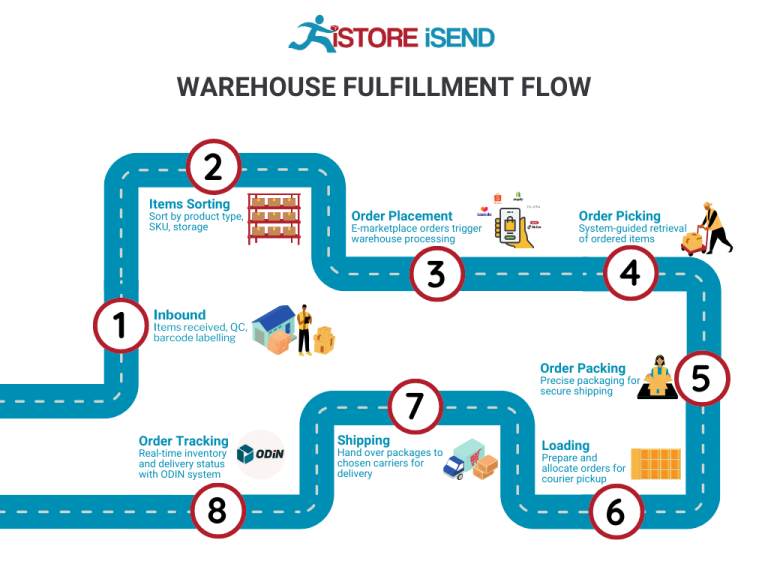
-
Enhanced Customer Trust: By utilizing Amazon’s trusted platform, sellers can benefit from the credibility that comes with it. Customers often feel more confident purchasing from sellers who use FBA due to Amazon’s reputation for reliability and customer service.
-
Multi-Channel Fulfillment: FBA allows sellers to fulfill orders not just from Amazon, but also from other sales channels. This means that whether you sell on your website, eBay, or other platforms, you can use Amazon’s fulfillment services to manage all orders, simplifying logistics.
-
Scalability: FBA enables sellers to scale their operations without investing heavily in their own warehousing and logistics infrastructure. As demand increases, sellers can send more inventory to Amazon, allowing for rapid growth.
-
Time Savings: By outsourcing fulfillment, sellers can focus on other aspects of their business, such as marketing, product development, and customer engagement, rather than managing logistics.
Cons of Fulfillment by Amazon (FBA)
-
High Fees: FBA comes with various fees, including storage fees for the inventory stored in Amazon’s warehouses and fulfillment fees for each order processed. These costs can add up quickly, especially for sellers with lower margins.
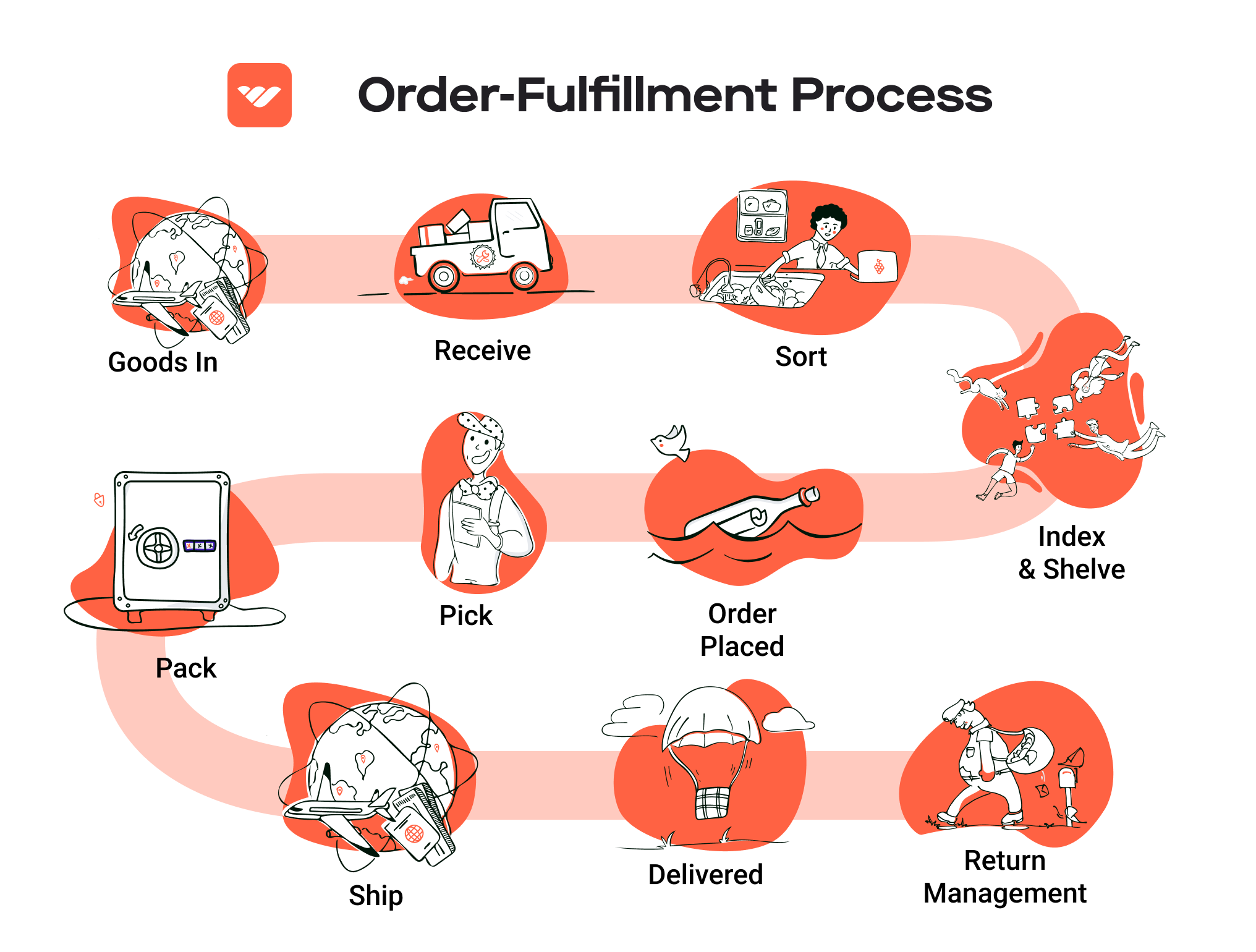
-
Strict Inventory Rules: Amazon has stringent policies regarding inventory management, including guidelines on labeling, packaging, and product returns. Sellers must comply with these regulations or risk additional fees or penalties.
-
Commingling Risks: When products are commingled, it means that inventory from multiple sellers is stored together. This can lead to issues where sellers might receive returns of products that are not theirs, complicating inventory tracking and management.
-
Loss of Branding Control: With FBA, sellers have limited control over the packaging and customer experience. Amazon’s standard packaging may not reflect a seller’s brand, which can diminish brand identity.
-
Dependency on Amazon’s Policies: Sellers are subject to Amazon’s policies and can be affected by changes in rules, fee structures, or account suspensions, which can significantly impact their business.
Who is FBA Best For?
Fulfillment by Amazon is particularly beneficial for:
-
Small to Medium-Sized Sellers: Those who may not have the resources to invest in their own fulfillment infrastructure can leverage FBA to compete effectively in the marketplace.
-
Brands Seeking Rapid Growth: Sellers looking to quickly scale their operations can benefit from Amazon’s logistics capabilities and extensive customer base.
-
Sellers with High-Volume Products: Products that have consistent demand and higher sales volumes can offset FBA fees, making it a cost-effective solution.
-
E-commerce Entrepreneurs Focused on Customer Experience: Sellers who want to provide a seamless shopping experience without managing logistics personally can find value in Amazon’s comprehensive service.
-
Multi-Channel Retailers: Brands that sell on multiple platforms and want a streamlined fulfillment process can benefit from FBA’s multi-channel capabilities.
In conclusion, while Fulfillment by Amazon offers numerous advantages such as access to Prime customers and reduced operational burdens, potential sellers must carefully consider the associated fees and limitations. By weighing these pros and cons, e-commerce businesses can make informed decisions about whether FBA aligns with their growth strategies and operational needs.
Core Services Offered by Fulfillment Centers
Inventory Management & Warehousing
Inventory management and warehousing are foundational services provided by fulfillment centers. This process involves the strategic storage of products and the oversight of inventory levels to ensure that e-commerce businesses can meet customer demand without overstocking or stockouts. Fulfillment centers utilize sophisticated inventory management systems that offer real-time tracking and reporting capabilities.
Benefits:
1. Optimized Stock Levels: By maintaining accurate inventory records, fulfillment centers help businesses manage stock levels efficiently. This reduces the risk of excess inventory that can tie up capital and storage space.
2. Reduced Operational Costs: Outsourcing warehousing to a fulfillment center can minimize overhead costs related to maintaining an in-house warehouse, such as staffing, utilities, and equipment.
3. Scalability: As e-commerce businesses grow, fulfillment centers can quickly adapt to increased inventory needs without requiring significant investments in infrastructure or staff.
4. Enhanced Accuracy: Advanced inventory management technologies reduce human error in stock counts, ensuring that order fulfillment is based on accurate inventory data.
Pick and Pack Services
Pick and pack services are critical in the order fulfillment process, where items are selected (picked) from the warehouse and packaged (packed) for shipment to customers. Fulfillment centers employ efficient systems to streamline these processes, often utilizing automation and technology to improve speed and accuracy.
Benefits:
1. Efficiency: Fulfillment centers are designed for speed. Their staff are trained to quickly locate products and prepare them for shipment, which significantly reduces order processing times.
2. Customization: Many fulfillment centers offer customizable packaging options, allowing e-commerce businesses to enhance their branding by including promotional materials or personalized messages in the packages.
3. Error Reduction: With systematic picking methods and technology such as barcode scanning, fulfillment centers minimize picking errors, ensuring that customers receive the correct items.
4. Faster Delivery Times: By optimizing the pick and pack process, fulfillment centers can ensure that orders are shipped out more quickly, leading to improved customer satisfaction and repeat business.
Kitting and Assembly
Kitting and assembly services involve the process of grouping individual items into ready-to-ship sets or assembling components into a finished product. This service is particularly beneficial for businesses that offer bundled products or require specific configurations of items.
Benefits:
1. Value-Added Services: Kitting allows businesses to offer unique product bundles or promotional sets that can enhance the perceived value to customers, potentially leading to increased sales.
2. Streamlined Operations: By outsourcing kitting and assembly, e-commerce businesses can focus on core activities like marketing and sales, while fulfillment centers handle complex assembly tasks.
3. Reduced Labor Costs: Instead of hiring additional staff for assembly tasks, businesses can leverage the expertise of fulfillment centers, reducing labor costs and improving efficiency.
4. Inventory Management: Fulfillment centers can manage inventory levels of individual components and kits, ensuring that businesses maintain adequate stock of both parts and finished products.
Returns Management (Reverse Logistics)
Returns management, also known as reverse logistics, is a crucial service that involves handling product returns from customers. This process includes receiving returned items, inspecting their condition, restocking, and managing exchanges or refunds. Effective returns management is essential for maintaining customer satisfaction and loyalty.
Benefits:
1. Customer Satisfaction: An efficient returns process enhances the customer experience, as it allows for easy exchanges or refunds. This builds trust and encourages repeat purchases.
2. Cost Control: Fulfillment centers can analyze return data to identify trends and reasons for returns, helping businesses to address underlying issues and reduce return rates.
3. Reintegration into Inventory: Returns are promptly inspected and restocked when possible, minimizing losses and ensuring that products are available for resale.
4. Expert Handling: Fulfillment centers have the expertise to manage returns in compliance with various regulations and standards, reducing the risk of potential liabilities for e-commerce businesses.
In conclusion, the core services offered by fulfillment centers—inventory management and warehousing, pick and pack services, kitting and assembly, and returns management—are integral to the success of e-commerce operations. By leveraging these services, businesses can streamline their logistics, improve customer satisfaction, and ultimately scale their operations effectively.
How to Choose a Fulfillment Partner: A 6-Point Checklist
Location & Warehouse Network
The location of your fulfillment partner’s warehouses plays a crucial role in your ability to meet customer expectations for fast shipping. Ideally, a fulfillment partner should have a network of strategically placed warehouses that can enable you to reach your customers quickly and efficiently.
Why It Matters:
– Shipping Speed: Proximity to your customer base can significantly reduce shipping times and costs, enhancing customer satisfaction.
– Cost Efficiency: A well-distributed warehouse network can lower shipping expenses, especially for larger or bulk orders.
Questions to Ask:
1. Where are your warehouses located, and how do they align with my target markets?
2. What is your average shipping time to major cities in my customer base?
3. Do you offer options for same-day or next-day delivery?
Technology & Integrations
In today’s digital age, the technology that a fulfillment partner employs can greatly affect your operational efficiency. A good 3PL should have robust technology that integrates seamlessly with your e-commerce platform, inventory management systems, and other essential tools.
Why It Matters:
– Real-Time Tracking: Advanced technology allows for better visibility of inventory and order status, which is critical for managing customer expectations.
– Automation: Automated systems can streamline order processing, reduce errors, and save time.
Questions to Ask:
1. What order management systems do you integrate with?
2. Can your technology provide real-time tracking and inventory updates?
3. How do you handle order discrepancies and returns through your technology?
Specializations (e.g., Cold Storage, Oversized Items)
Depending on the nature of your products, you may need a fulfillment partner that has specific capabilities. For instance, if you sell perishable goods, cold storage capabilities will be essential. Similarly, if your products are oversized or fragile, specialized handling may be required.
Why It Matters:
– Product Safety: Specialized storage and handling ensure that your products are kept in optimal conditions, reducing spoilage or damage.
– Compliance: Certain products may require adherence to specific regulations, making it essential to choose a partner familiar with those requirements.
Questions to Ask:
1. Do you have specialized facilities for my product type (e.g., cold storage, hazardous materials)?
2. What are your procedures for handling and storing delicate or oversized items?
3. Can you accommodate seasonal inventory fluctuations specific to my industry?
Scalability & Capacity
As your business grows, your fulfillment partner needs to be able to scale with you. This includes having the capacity to handle increased order volumes and the flexibility to adapt to seasonal demands.
Why It Matters:
– Growth Support: A scalable partner can accommodate your business growth without service interruptions.
– Flexibility: The ability to quickly ramp up or down based on demand can save costs and resources.
Questions to Ask:
1. How do you handle peak seasons and fluctuations in order volume?
2. What is your capacity for scaling operations, and how quickly can you adapt?
3. Can you provide examples of how you’ve successfully scaled for other clients?
Pricing and Contracts
Understanding the pricing structure and contract terms is vital to ensure that you’re making a financially sound decision. Transparent pricing will help you avoid unexpected costs and ensure that you can budget effectively.
Why It Matters:
– Cost Management: Clear pricing helps in budgeting and forecasting expenses, allowing for more strategic financial planning.
– Contract Flexibility: A fair contract can protect your interests and ensure that you have options if your needs change.
Questions to Ask:
1. What are your pricing models (e.g., per order, storage fees, shipping costs)?
2. Are there any hidden fees I should be aware of?
3. What are the terms regarding contract cancellation or adjustments?
Customer Support & Reviews
The level of customer support provided by your fulfillment partner can have a direct impact on your operations and customer experience. Additionally, reviews and testimonials can provide insight into their reliability and service quality.
Why It Matters:
– Reliability: A responsive support team can quickly resolve issues, minimizing disruptions to your operations.
– Reputation: Positive reviews from other businesses can indicate a partner’s reliability and quality of service.
Questions to Ask:
1. What support channels do you offer (e.g., phone, email, chat)?
2. How quickly can I expect a response to inquiries or issues?
3. Can you provide references or case studies from current or past clients?
Conclusion
Selecting the right fulfillment partner is a critical decision that can significantly impact your e-commerce business’s efficiency and customer satisfaction. By evaluating potential partners through this checklist, you can make an informed choice that aligns with your operational needs and business goals. Remember, the right partner will not only fulfill orders but will also support your growth and enhance your customer experience.
Understanding Fulfillment Pricing: A Breakdown of Common Fees
Initial Setup Fees
When partnering with a fulfillment center, the initial setup fee is often the first cost you encounter. This fee typically covers the administrative expenses related to onboarding your business into the fulfillment system. These costs may include the creation of your account, integration with your e-commerce platform, and any necessary training for your staff or your team.
How It’s Calculated:
Initial setup fees can vary widely depending on the complexity of your needs. Some fulfillment centers may charge a flat fee, while others may base it on the volume of products you plan to store or ship. Be prepared for this cost to range from a few hundred to several thousand dollars, especially if you require custom integrations or specialized services.
Receiving Fees
Receiving fees are charged when the fulfillment center accepts your inventory. This fee covers the labor and resources needed to unload, inspect, and enter your products into the warehouse management system.
How It’s Calculated:
Receiving fees are typically calculated per pallet or per item. For example, a fulfillment center might charge a set rate for each pallet received (often ranging from $20 to $50) or a per-item fee that can range from $0.10 to $1.00. If you have a large volume of items, these costs can add up quickly, so it’s crucial to understand how your specific fulfillment partner calculates this fee.
Storage Fees (per pallet/bin)
Storage fees are charged for keeping your inventory within the fulfillment center. These fees can be a significant part of your overall fulfillment costs, especially if you are storing large quantities of products.
How It’s Calculated:
Most fulfillment centers charge storage fees on a monthly basis, calculated per pallet or per bin. For example, you may pay around $15 to $30 per pallet per month, while bin-based storage could range from $5 to $10 per bin. Some centers may also implement tiered pricing structures that offer discounts for higher volumes. Be mindful of seasonal fluctuations in storage fees, as many fulfillment centers charge higher rates during peak seasons like the holidays.
Pick & Pack Fees (per item/order)
Pick and pack fees are incurred each time an order is processed. This includes the labor required to pick items from storage, pack them securely, and prepare them for shipment. These fees are crucial for understanding your overall fulfillment costs, as they directly impact your margins.
How It’s Calculated:
Pick and pack fees can be structured in several ways. Some fulfillment centers charge a flat fee per order, while others charge per item within the order. Typical costs might range from $1.00 to $3.00 per order and an additional fee of $0.25 to $1.00 per item picked. If your products vary significantly in size and weight, it’s worth discussing how these factors influence the fees to avoid unexpected costs.
Shipping Fees
Shipping fees are the costs associated with transporting your products from the fulfillment center to your customers. This fee can vary greatly depending on the shipping method chosen, the destination, and the size and weight of the packages.
How It’s Calculated:
Shipping fees are generally based on the carrier’s rates, which can fluctuate based on factors such as distance, package dimensions, and weight. Fulfillment centers often negotiate rates with major carriers like FedEx or UPS, which can provide savings for your business. Some centers may charge a handling fee on top of the shipping costs, which could range from $0.50 to $2.00 per package. It’s essential to understand whether your fulfillment partner includes these fees in their quoted shipping rates or if they are charged separately.
Tips for Getting an Accurate Quote
-
Request Detailed Pricing Information: Always ask for a breakdown of all fees associated with fulfillment, including hidden charges that may not be immediately apparent.
-
Consider Your Unique Needs: Provide potential partners with specifics about your inventory size, order volume, and shipping requirements to receive a more tailored quote.
-
Evaluate Multiple Providers: Don’t settle for the first quote you receive. Comparing multiple fulfillment centers can help you identify the best pricing and services for your business.
-
Ask About Discounts: Inquire if the fulfillment center offers discounts for higher volumes or long-term contracts, which can significantly reduce your overall costs.
-
Review Contract Terms Carefully: Ensure you understand the terms of service, including any clauses that may affect pricing over time, such as rate increases during peak seasons.
By taking these steps, you can secure a fulfillment pricing structure that aligns with your business needs, helping you scale efficiently while keeping costs manageable.
Frequently Asked Questions (FAQs) about Fulfillment
1. What is an Amazon Fulfillment Center?
An Amazon Fulfillment Center is a large warehouse where Amazon stores products for sellers who use the Fulfillment by Amazon (FBA) service. These centers handle various logistics functions, including receiving inventory, picking and packing orders, and shipping them directly to customers. By utilizing these centers, sellers can leverage Amazon’s extensive logistics network and customer service support.
2. How does Fulfillment by Amazon (FBA) work?
FBA allows sellers to store their products in Amazon’s fulfillment centers. When a customer orders a product, Amazon picks, packs, and ships the order on behalf of the seller. Additionally, Amazon handles customer service and returns, making it easier for sellers to focus on growing their businesses without worrying about logistics.
3. What’s the difference between a warehouse and a fulfillment center?
While both warehouses and fulfillment centers store products, their functions differ significantly. A warehouse primarily focuses on storing inventory until it is needed, often for bulk distribution or storage purposes. In contrast, a fulfillment center is designed for processing customer orders, including picking, packing, and shipping, which is essential for e-commerce operations.
4. What is a 3PL (Third-Party Logistics)?
A 3PL provider offers outsourced logistics services, including storage, fulfillment, and shipping. Businesses partner with 3PLs to manage their supply chain operations more efficiently, allowing them to focus on core activities like marketing and sales. 3PLs can provide flexibility, scalability, and expertise that many businesses find beneficial, especially when scaling operations.
5. How much do fulfillment services cost?
The cost of fulfillment services varies based on several factors, including order volume, storage space, and specific services required (e.g., custom packaging or returns management). Generally, costs may include storage fees, picking and packing fees, and shipping charges. It’s essential for businesses to evaluate these costs against the potential savings and efficiency gains from outsourcing fulfillment.
6. What are the benefits of using Amazon Fulfillment Centers?
Using Amazon Fulfillment Centers provides numerous advantages, including access to Amazon’s vast customer base, faster shipping options (like Prime), and the ability to leverage Amazon’s customer service. This helps sellers scale their businesses efficiently while maintaining a high level of service and customer satisfaction.
7. Can I use Amazon Fulfillment Centers and a 3PL at the same time?
Yes, many businesses opt to use both Amazon Fulfillment Centers and a 3PL. This hybrid approach allows them to benefit from Amazon’s extensive reach while also leveraging the flexibility and customization options that a 3PL can provide for other sales channels or products that may not be suited for FBA.
8. What are the key requirements for using FBA?
To use FBA, sellers must create an Amazon seller account, comply with Amazon’s packaging and labeling requirements, and ship their products to designated fulfillment centers. Additionally, sellers should ensure their products meet Amazon’s quality and safety standards to avoid penalties or account suspension.
9. How can I optimize my fulfillment strategy?
Optimizing your fulfillment strategy involves several key steps: analyzing order volumes, understanding customer preferences, investing in technology for inventory management, and continuously monitoring performance metrics (such as shipping times and return rates). Implementing these practices can enhance efficiency and improve customer satisfaction.
10. What happens if there’s an issue with my FBA orders?
If there’s an issue with your FBA orders, such as delayed shipments or inventory discrepancies, Amazon provides a support system for sellers. You can access the Seller Central dashboard to track issues, communicate with Amazon’s support team, and resolve any problems. It’s crucial to regularly monitor your account health to address any issues proactively.
Conclusion: Is Outsourcing Fulfillment the Right Move for Your Business?
Evaluating the Benefits of Outsourcing Fulfillment
Outsourcing fulfillment can be a transformative decision for e-commerce businesses aiming to scale operations efficiently. By leveraging fulfillment services, businesses can significantly save time—freeing up resources that can be redirected towards strategic growth initiatives such as marketing, product development, and customer engagement. This time efficiency is particularly vital in today’s fast-paced market, where customer expectations for speedy delivery are at an all-time high.
Additionally, fulfillment services provide invaluable scalability. As your order volume fluctuates, a reliable fulfillment partner can adapt to these changes without the need for extensive capital investment in infrastructure. This flexibility allows businesses to respond to seasonal demands or unexpected spikes in orders while maintaining high levels of customer satisfaction.
Moreover, partnering with a fulfillment expert brings specialized knowledge and expertise to your operations. These providers are well-versed in the complexities of logistics, from inventory management to compliance with marketplace requirements. Their experience can lead to optimized processes, reduced shipping costs, and improved delivery times, all of which contribute to a better overall customer experience.
However, the choice of a fulfillment partner is critical. Not all fulfillment services are created equal, and selecting the right one can significantly impact your growth trajectory. It’s essential to assess potential partners based on their technology, infrastructure, and ability to align with your business goals.
Take Action
As you consider the next steps for your business, conduct a thorough audit of your current shipping processes. Evaluate whether outsourcing fulfillment could streamline your operations and enhance your customer experience. If you find gaps or inefficiencies, it may be time to explore fulfillment partnerships that can propel your business forward. Embrace the opportunity for growth—your future success may depend on it.
Important Disclaimer
⚠️ Important Disclaimer
The information in this guide is for educational purposes. Fulfillment services, pricing, and platform features change frequently. Always conduct your own due diligence and consult with providers directly before making business decisions.
